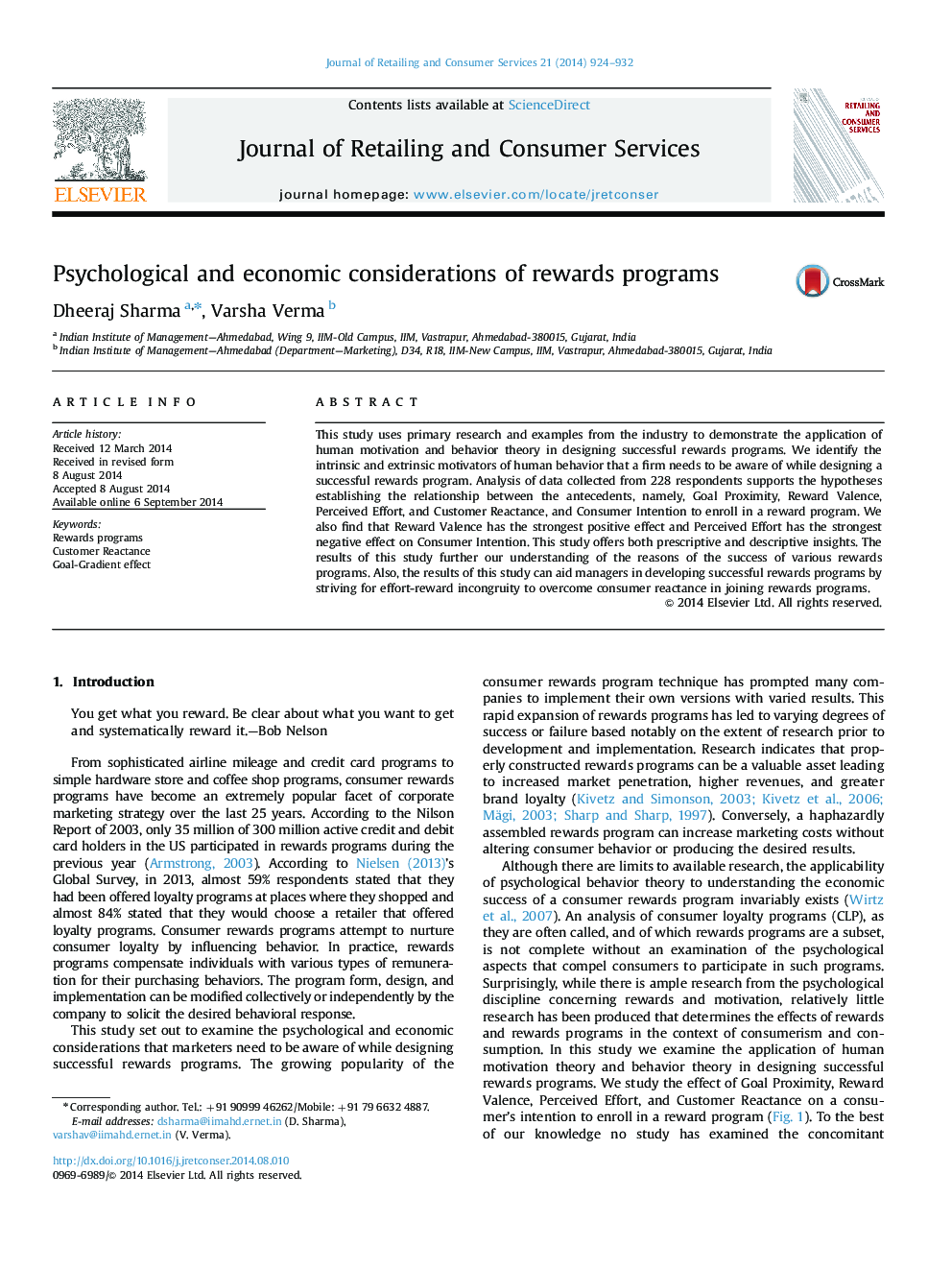| Article ID | Journal | Published Year | Pages | File Type |
|---|---|---|---|---|
| 1028955 | Journal of Retailing and Consumer Services | 2014 | 9 Pages |
•We examine antecedents to intention to enrol into rewards programs.•Goal Proximity and Reward Valence are positively related to intention to enrol.•Perceived Effort and reactance are negatively related to intention to enrol.•We rank the antecedents based on order of their influence.•We discuss successful and unsuccessful applications of above relationships.
This study uses primary research and examples from the industry to demonstrate the application of human motivation and behavior theory in designing successful rewards programs. We identify the intrinsic and extrinsic motivators of human behavior that a firm needs to be aware of while designing a successful rewards program. Analysis of data collected from 228 respondents supports the hypotheses establishing the relationship between the antecedents, namely, Goal Proximity, Reward Valence, Perceived Effort, and Customer Reactance, and Consumer Intention to enroll in a reward program. We also find that Reward Valence has the strongest positive effect and Perceived Effort has the strongest negative effect on Consumer Intention. This study offers both prescriptive and descriptive insights. The results of this study further our understanding of the reasons of the success of various rewards programs. Also, the results of this study can aid managers in developing successful rewards programs by striving for effort-reward incongruity to overcome consumer reactance in joining rewards programs.
